Title search results
Showing 1 - 20 of 1505 items
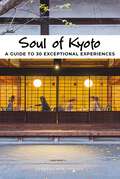
Soul of Kyoto: A Guide to 30 Exceptional Experiences (Soul of)
By Thierry Teyssier. 2021
For ten years, we tested and kept a list of Kyoto's most secret spots.Only 30 made the final cut.30 unique…
and exclusive experiences that reveal the soul of Kyoto.&“One afternoon in the space of a cherry tree in Kyoto, and here I am lifted to the highest heights of the intoxication of existing.&” – René DepestreDiscover the loveliest spot to picnic on the banks of the river without being harassed by eagles, have your own barbecue behind the fish market, attend a tea ceremony in a private home, meet the craftsman who has just revived the traditional Kyoto fan that had virtually disappeared for 50 years, head to a fishing village to discover the world's first itinerant hotel, push open the door to a bar hidden inside a temple, eat the best egg sandwich in town, go to the public baths to reconnect with a local ancestral tradition, taste the aguri mochi that started a thousand-year rivalry, or watch as a wood warehouse is transformed into an izakaya at nightfall ...Soul of Kyoto was written by Thierry Teyssier, a traveling hotelier who likes to choreograph his dreams, and those of his clients. Here, he orchestrates encounters, discoveries, and shared moments to trace for us the soul of a city as beautiful as it is inaccessible. The &‘Soul of' collection is a new approach to traveling that is all about wandering around, chance encounters, and unforgettable experiences. Guides for those looking to unlock the hidden doors of a city, find its pulse, and plumb every last nook and cranny to uncover its soul.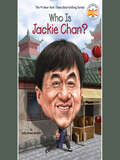
Who is jackie chan? (Who Was?)
By Jody Jensen Shaffer. 2020
How did Jackie Chan become one of the most recognizable and beloved actors in the world? Find out in this…
exciting biography of this martial artist turned international film superstar. When Kong-sang was a young boy in Hong Kong, he enjoyed practicing martial arts with his dad but hated going to school. He was eventually enrolled in the China Drama Academy, where he improved his martial arts skills and became a stuntman. That training led to a successful career as an actor. Kong-sang, now known as Jackie Chan, never gave up on his passion for screwball physical comedy. Luckily for Jackie, his determination paid off. His humor and dangerous stuntwork in films like Cannonball Run , Rush Hour , Shanghai Noon , and Karate Kid have made him an international star, and it doesn't look like he'll be leaving the big screen anytime soon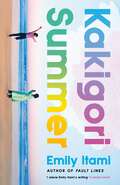
Kakigori Summer
By Emily Itami. 2025
'I ADORE EMILY ITAMI'S WRITING' FLORENCE KNAPPSisters Rei, Kiki and Ai have always had to look out for one another…
- but life has taken them on very different paths. Eldest daughter Rei is spiky and sensible, distracting herself with an all-consuming job at a financial corporation in London. Big-hearted Kiki is a single mother in Tokyo, juggling the demands of her young son and the cantankerous elderly residents of the retirement home she works in. The free-spirited youngest, Ai , is a Japanese pop idol who has found fame and fortune but lost herself along the way. When Ai is embroiled in a scandal and thrust into the spotlight, Rei must pick up the pieces of her family once more. Over the course of a summer in their childhood home on the Japanese coast, the sisters reunite with their sharp-tongued grandmother, entertain Kiki's irrepressible son and silently worry about Ai, carefully avoiding the subject of their mother's death fifteen years before. But silence between sisters can only last for so long . . . Transporting, funny and moving, Kakigori Summer is an uplifting exploration of love and loss, sisterhood and family, the stories we tell ourselves about the past and how they determine our future.
Kakigori Summer
By Emily Itami. 2025
'I ADORE EMILY ITAMI'S WRITING' FLORENCE KNAPPSisters Rei, Kiki and Ai have always had to look out for one another…
- but life has taken them on very different paths. Eldest daughter Rei is spiky and sensible, distracting herself with an all-consuming job at a financial corporation in London. Big-hearted Kiki is a single mother in Tokyo, juggling the demands of her young son and the cantankerous elderly residents of the retirement home she works in. The free-spirited youngest, Ai , is a Japanese pop idol who has found fame and fortune but lost herself along the way. When Ai is embroiled in a scandal and thrust into the spotlight, Rei must pick up the pieces of her family once more. Over the course of a summer in their childhood home on the Japanese coast, the sisters reunite with their sharp-tongued grandmother, entertain Kiki's irrepressible son and silently worry about Ai, carefully avoiding the subject of their mother's death fifteen years before. But silence between sisters can only last for so long . . . Transporting, funny and moving, Kakigori Summer is an uplifting exploration of love and loss, sisterhood and family, the stories we tell ourselves about the past and how they determine our future.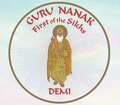
Guru Nanak: First of the Sikhs
By Demi. 2021
Guru Nanak (1469-1539), the founder of the Sikh religion, is the first in a line of ten enlightened gurus, or…
teachers, whose writings form the sacred scripture of Sikhism. Born into a humble Hindu family, Nanak was an extraordinary child who from a young age questioned the rituals of religion and the ways of the world around him. At the age of twenty-seven, he embarked on an inspired mission that took him from the sacred Himalayas in India, Nepal, and Tibet to the holy city of Mecca in Arabia. Throughout his twenty-five-year travels, Guru Nanak preached a message of one God, sincere worship, and of peace and equality for all. Today the Sikh religion numbers as many as 25 million followers worldwide and Guru Nanak is revered by Hindus and Muslims alike. Award-winning author, Demi, recounts his spiritual journey, showing how the essential teachings of Sikhism are expressed through Guru Nanak's remarkable life and in his poetry.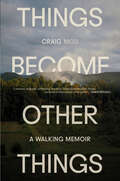
Things Become Other Things: A Walking Memoir
By Craig Mod. 2025
A transformative 300-mile walk along Japan&’s ancient pilgrimage routes and through depopulating villages inspires a heartrending remembrance of a long-lost…
friend, documented in poignant, imaginative prose and remarkable photography.&“An epic, exquisitely detailed journey, on foot, through a rural Japan few of us are likely to experience. Uniquely unforgettable.&”—William Gibson, New York Times bestselling author of NeuromancerPhotographer and essayist Craig Mod is a veteran of long solo walks. But in 2021, during the pandemic shutdown of Japan&’s borders, one particular walk around the Kumano Kodō routes—the ancient pilgrimage paths of Japan&’s southern Kii Peninsula—took on an unexpectedly personal new significance. Mod found himself reflecting on his own childhood in a post-industrial American town, his experiences as an adoptee, his unlikely relocation to Japan at nineteen, and his relationship with one lost friend, whose life was tragically cut short after their paths diverged. For Mod, the walk became a tool to bear witness to a quiet grace visible only when &“you&’re bored out of your skull and the miles left are long.&”Tracing a 300-mile-long journey, Things Become Other Things folds together history, literature, poetry, Shinto and Buddhist spirituality, and contemporary rural life in Japan via dozens of conversations with aging fishermen, multi-generational inn owners, farmers, and kissaten cafe &“mamas.&” Along the way, Mod communes with mountain fauna, marvels over evidence of bears and boars, and hopscotches around leeches. He encounters whispering priests and foul-mouthed little kids who ask him, &“Just what the heck are you, anyway?&” Through sharp prose and his curious archive of photographs, he records evidence of floods and tsunamis, the disappearance of village life on the peninsula, and the capricious fecundity of nature.Things Become Other Things blends memoir and travel writing at their best, transporting readers to an otherwise inaccessible Japan, one made visible only through Mod&’s unique bicultural lens.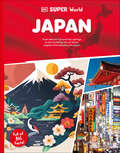
DK Super World: Japan (DK Super World)
By Dk. 2025
From Mount Fuji and hot springs to the bustling city of Tokyo, explore the wonders of Japan.DK Super World: Japan…
is part of the new DK Super World series for children aged 7-11 to explore the wonders of diverse cultures and landscapes across the globe.Captivating and curriculum-aligned, this book builds background knowledge and is the perfect support for learning about the countries of the world. Embark on an educational journey with this enriching Japan country profile book, specifically tailored for elementary school pupils.This geography book for children offers:Curriculum-aligned and age-appropriate material that covers all the core teaching points.Bright images, engaging content, and interactive elements that helps encourage reluctant learners.Vocabulary-building content covering a wide range of topics.Captivating and curriculum-aligned content, diagrams, and interactive elements provide an immersive learning experience while covering core information about the richness of our world, one country at a time.With vibrant visuals and age-appropriate content to make complex information accessible and engaging for young learners, Japan is the ideal companion to any science learning. Transform learning into an adventure with DK Super World, bringing science to life on every page.
DK Top 10 Tokyo (Pocket Travel Guide)
By Dk Travel. 2025
The world’s favourite pocket travel guidesMake the most of your trip to Tokyo with this Top 10 guide. Planning is…
a breeze with our simple lists of ten, covering the very best that Tokyo has to offer and ensuring that you don’t miss a thing. Best of all, the pocket-friendly format is light and easily portable; the perfect companion while out and about.Inside this guide to Tokyo, you’ll find:Top 10 lists of Tokyo’s must-sees and must-dos, including visiting the Senso-ji Temple, wandering around the Imperial Palace Grounds and exploring the streets of NihonbashiTokyo's most interesting areas, with the best places for sightseeing, food and drink, and shoppingThemed lists, including the best art galleries, gardens and parks, historic buildings, Onsen and Sento and much moreBrand-new itineraries, perfect for a day trip, a weekend or a weekA laminated pull-out map of Tokyo, plus seven full-colour area mapsDK’s Top 10 travel guides have been helping travellers to make the most of their breaks since 2002.Looking for more on Tokyo’s culture, history and attractions? Try our DK Tokyo travel guide.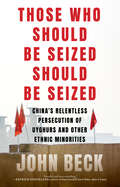
A shocking, on-the-ground investigation of the Chinese government&’s brutal oppression of its Muslim citizens — the Uyghurs, ethnic Kazakhs, and…
others — from Xinjiang to the streets of New York and Washington, DC . . .Award-winning journalist John Beck recounts China's persecution of the predominantly Muslim minorities in Xinjiang and its relentless pursuit of the few who escaped beyond its borders. Through intertwined literary narratives combined with snippets of original source material, including official directives and speeches, he pieces together the individual stories of what consecutive American administrations have described as genocide. The narrative moves from China to Kazakhstan, Turkey and the US, incorporating the tensions, discrimination, and occasional violence that characterised life in Xinjiang for decades. But when Xi Jinping is appointed President in 2013, the creeping repression quickly escalates into a crackdown of unprecedented scope and severity.Beck follows 4 characters: a Kazakh writer and an Uyghur nurse who survived re-education camps before ultimately escaping abroad, a human rights advocate involved in securing their release, and an inadvertent exile spied on by Chinese authorities as his family back home was used as leverage against him.Through their stories, the book explores identity, dehumanization, and censorship, the force of literature in dark times, and an all-pervasive apparatus of repression able to exist within miles of the White House.John Beck lived in Istanbul for a number of years, where he was in close contact with the city's Uyghur diaspora and wrote on the crackdown and related issues for publications including Harper's and National Geographic. Some of that work forms the basis of this book along with further reporting from Almaty, Kazakhstan, Virginia, and New York.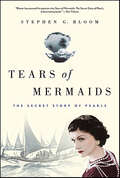
Tears of Mermaids: The Secret Story of Pearls
By Stephen G. Bloom. 2009
A round, luminescent pearl is the simplest and most perfect gem. Columbus sought—and found—this precious jewel coveted by his Spanish…
sovereigns, sparking popularity throughout Europe. Fashion icons Jacqueline Kennedy, Princess Grace, and Michelle Obama cherished them, making them iconic. And designer Coco Chanel raised them to new heights, bringing pearls— fake and real—to women everywhere. In Tears of Mermaids, Stephen G. Bloom travels 30,000 miles in an effort to trace a single pearl—from the moment a diver off the coast of Australia scoops an oyster containing a single luminescent pearl from the ocean floor to the instant a woman fastens the clasp of a strand containing the same orb. Bloom chronicles the never-before-told saga of the global pearl trade by gaining access to clandestine outposts in China, the Philippines, French Polynesia and Australia. He infiltrates high-tech pearl farms guarded by gun-toting sentries, farms for pearls in rural China, and even goes backstage at Christie's for a fast and furious auction of the most expensive pearl ever sold. Teeming with rogue humor and uncanny intelligence, Tears of Mermaids weaves a nonstop detective story whose main character is the world's most enduring jewel.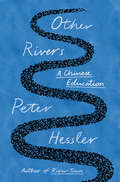
Other Rivers: A Chinese Education
By Peter Hessler. 2024
An intimate and revelatory account of two generations of students in China&’s heartland, by an author who has observed the…
country&’s tumultuous changes over the past quarter centuryMore than two decades after teaching English during the early part of China&’s economic boom, an experience chronicled in his book River Town, Peter Hessler returned to Sichuan Province to instruct students from the next generation. At the same time, Hessler and his wife enrolled their twin daughters in a local state-run elementary school, where they were the only Westerners. Over the years, Hessler had kept in close contact with many of the people he had taught in the 1990s. By reconnecting with these individuals—members of China&’s &“Reform generation,&” now in their forties—while teaching current undergrads, Hessler gained a unique perspective on China&’s incredible transformation.In 1996, when Hessler arrived in China, almost all of the people in his classroom were first-generation college students. They typically came from large rural families, and their parents, subsistence farmers, could offer little guidance as their children entered a brand-new world. By 2019, when Hessler arrived at Sichuan University, he found a very different China, as well as a new kind of student—an only child whose schooling was the object of intense focus from a much more ambitious cohort of parents. At Sichuan University, many young people had a sense of irony about the regime but mostly navigated its restrictions with equanimity, embracing the opportunities of China&’s rise. But the pressures of extreme competition at scale can be grueling, even for much younger children—including Hessler&’s own daughters, who gave him an intimate view into the experience at their local school.In Peter Hessler&’s hands, China&’s education system is the perfect vehicle for examining the country&’s past, present, and future, and what we can learn from it, for good and ill. At a time when anti-Chinese rhetoric in America has grown blunt and ugly, Other Rivers is a tremendous, essential gift, a work of enormous empathy that rejects cheap stereotypes and shows us China from the inside out and the bottom up. As both a window onto China and a mirror onto America, Other Rivers is a classic from a master of the form.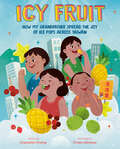
Icy Fruit: How My Grandfather Spread the Joy of Ice Pops Across Taiwan
By Charlotte Cheng. 2025
This fun and fascinating biography of a Taiwanese ice pop entrepreneur—the author's beloved grandfather—is a terrific read-aloud about inventiveness and…
the treats of summer.Charlotte Cheng's grandfather always had a bag of coins rustling in his pocket. That bag carried with it "a story of joyful jingles, sultry summers, and fresh frozen fruit which began in 1965 in the lush valleys and mountains of an island called Taiwan."This story of Agong's Icy Fruit company, from first inspired idea through experimentation to countrywide success, is a lyrical, lively, and richly illustrated read that's part biography, part family tribute, and part celebration of summer. Gather round for Icy Fruit!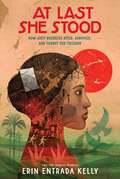
At Last She Stood: How Joey Guerrero Spied, Survived, and Fought for Freedom
By Erin Entrada Kelly. 2025
"A courageous, uplifting biography of a woman almost lost to history.” –ALA Booklist World War II spy, Filipino guerrilla fighter, war…
hero, Medal of Freedom recipient, leprosy survivor, teacher, peacemaker . . . The legendary and inspiring life and work of Josefina “Joey” Guerrero is introduced to readers by two-time Newbery Medal winner, National Book Award finalist, and bestselling author Erin Entrada Kelly. For fans of Steve Sheinkin and Candace Fleming.Joey Guerrero, a native of the Philippines, was diagnosed with leprosy (Hansen’s disease) as World War II unfolded in Europe and Asia. Soon after the Japanese occupied the Philippines, Joey—believing she would die soon—joined the guerrilla movement to complete covert missions in support of the Allies. Because of her condition, she was rarely searched by Japanese soldiers, which allowed her to courier secret messages, including an invaluable minefield map that she taped to her back. She was eventually awarded the US Presidential Medal of Freedom and admitted to the National Leprosarium in Carville, Louisiana, where she lived for nine years. When she was cured and released, she found it difficult to find work because of racial discrimination and her health history and was forced to pawn her Presidential Medal to make ends meet. Eventually, she shed her previous identity. When she died in 1996, her obituary identified her as a secretary from Manila. But Joey Guerrero was much more than that—she was a hero who changed the course of history.Erin Entrada Kelly’s engaging nonfiction debut combines themes of the Philippines, World War II, the Asia-Pacific War, spy stories, Louisiana, immigration, disease and medicine, racism, perseverance, religious devotion, and hope. Illustrated with photographs, maps, and other illustrative material and featuring sidebars that clearly illuminate key moments in history, At Last She Stood is for readers and educators who love Candace Fleming, Deborah Heiligman, Christina Soontornvat, and Steve Sheinkin. Includes an author’s note, source notes, index, and other back matter.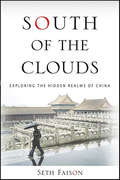
South of the Clouds: Exploring the Hidden Realms of China
By Seth Faison. 2004
South of the Clouds offers a fascinating, intimate portrait of China by telling the story of an American man who…
ventures into its hidden realms---romance, politics, the criminal underworld, and Tibet. As he matures from a wide-eyed student into a journalist and a seasoned observer, he develops a passion for uncovering secrets, about China and about himself.The author navigates his way past forbidding walls to peek inside the dark corners of Chinese society, relying on a remarkable collection of friends and acquaintances who help guide the way: an embittered policeman in Xian, a gay professor in Shanghai, and a Buddhist monk in Tibet, who presides at an ancient burial ritual where the corpse is carved up and fed to wild vultures.The Tiananmen Square massacre, people smuggling, and the Falun Gong movement are among the political and social upheavals that the author explains as he witnesses China's uncertain road toward capitalism and its place in the modern world.Along his travels, the author wrestles with his own cultural identity, his sexuality, and his spiritual bearings. He finds an erotic outlet in the Chinese "Sauna Massage" and a stirring emotional connection with Jin Xing, a brilliant choreographer and China's first openly transsexual citizen. Ultimately, he discovers the answer to lifelong questions on a mountaintop in Tibet. Seth Faison, with a subtle understanding of Chinese culture, brings past and present events to life in a thought-provoking account of this mysterious nation and its people.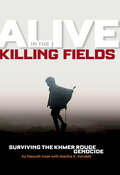
Alive in the Killing Fields: Surviving the Khmer Rouge Genocide
By Martha E. Kendall, Martha Kendall. 2009
Alive in the Killing Fields is the real-life memoir of Nawuth Keat, a man who survived the horrors of war-torn…
Cambodia. He has now broken a longtime silence in the hope that telling the truth about what happened to his people and his country will spare future generations from similar tragedy.In this captivating memoir, a young Nawuth defies the odds and survives the invasion of his homeland by the Khmer Rouge. Under the brutal reign of the dictator Pol Pot, he loses his parents, young sister, and other members of his family. After his hometown of Salatrave was overrun, Nawuth and his remaining relatives are eventually captured and enslaved by Khmer Rouge fighters. They endure physical abuse, hunger, and inhumane living conditions. But through it all, their sense of family holds them together, giving them the strength to persevere through a time when any assertion of identity is punishable by death.Nawuth’s story of survival and escape from the Killing Fields of Cambodia is also a message of hope; an inspiration to children whose worlds have been darkened by hardship and separation from loved ones. This story provides a timeless lesson in the value of human dignity and freedom for readers of all ages.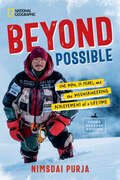
Beyond Possible (Young Readers' Edition)
By Nims Purja. 2022
Join Nepalese climber Nimsdai Purja as he recounts his journey to scale all 8,000 meter “Death Zone” mountains in seven…
months. In this action-packed memoir, young readers will not only learn how Nimsdai physically accomplished this incredible feat, but also how his attitude, leadership skills, and willingness to learn from mistakes took him to the top. From his childhood growing up in Nepal, to a career as an elite soldier in the British army, Nimsdai shows how his early life shaped him and enabled him to go beyond what people though was possible.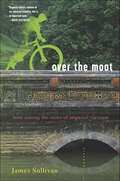
Over the Moat: Love Among the Ruins of Imperial Vietnam
By James Sullivan. 2004
“Cultures clash, but love conquers, with some fascinating twists and plenty of intimate details.” —Kirkus ReviewsJames Sullivan's Over the Moat…
details his travels in Vietnam to bicycle from Saigon to Hanoi. He has just finished graduate school and has an assignment to write a magazine story about a country that is still subject to a U.S. trade embargo. But in Hue, the old imperial capital of Vietnam, the planned three-month bike trip in the fall of 1992 takes a detour. Here, in a city spliced by the famed Perfume River and filled with French baroque villas, he finds himself bicycling over a moat to visit a beautiful shop girl who lives amid the ruins of the last imperial dynasty of Vietnam. She falls for him, but there's a catch. Several other suitors are vying for her hand, and one of them is an official with the city's police force. Over the Moat is the story of Sullivan's efforts to win Thuy's favor while immersing himself in Vietnamese culture, of kindly insinuating himself in Thuy's colorful and warm family, and of learning how to create a common language based on love and understanding.
The Energy Transition in Japan: Smart Cities and Smart Solutions (Routledge Explorations in Energy Studies)
By Maciej M. Sokołowski, Fumio Shimpo. 2025
This book offers a distinctive and comprehensive view of the energy transition of Japan, with a particular focus on the…
rise of smart cities.Drawing on real examples from Japan’s journey towards carbon neutrality, this volume examines a variety of topics ranging from laws and policies to technological and managerial solutions, discussing them in the context of Japan’s energy transition. Among the issues covered by the book are climate action planning, sustainable waste management, energy poverty, decarbonisation, e-methane, transport policies, and smart grids. The book also explores the regulatory tools that either support or hinder the development of smart cities in Japan, and how Japan can leverage its national solutions globally. In this way, this book serves as a guide for global climate action and energy transitions around the world.Focusing on both stories of success and lessons learned, this book will be a valuable resource for students and scholars of energy transitions, climate action, smart cities, as well as Asian and Japanese studies more broadly.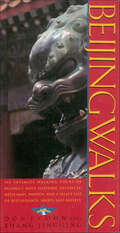
Beijingwalks: Six Intimate Walking Tours of Beijing's Most Historic Districts
By Don J. Cohn, Zhang Jingqing. 1928
Ever since Marco Polo published his wide-eyed report on Khanbaligh, or Cambaluc, the city of the Mongol khans, Peking—as Beijing…
has been known for most of the past 300 years—has captured the Western imagination as few other ancient cities have.Beijing Walks presents six detailed walking tours of the most important historic quarters of the Chinese capitalthe Forbidden City, the former Legation Quarter, Beihai Park, the Temple of Heaven, the Confucius Temple, the Summer Palace, Tiananmen Square, and the Olympic Village. All tours are placed in their imperial contexts and enlivened with drawings and photographs. Cohn offers vital information on everything from feng shui, Pekingese dogs, and Peking duck to Peking Opera and the emperors' private lives, evoking the sights, sounds, and smells of old Peking, its pleasures and its grandeur. 115 full-color photos and 17 maps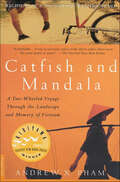
Catfish and Mandala: A Two-Wheeled Voyage Through the Landscape and Memory of Vietnam
By Andrew X. Pham. 1999
“A brilliantly written memoir in which a young Vietnamese-American uses a bicycle journey in his homeland as a vehicle to…
tell his eventful life story.” —Kirkus ReviewsWinner of the Kiriyama Pacific Rim Book PrizeA New York Times Notable Book of the YearWinner of the Whiting Writers’ AwardA Seattle Post-Intelligencer Best Book of the YearCatfish and Mandala is the story of a young man’s solo bicycle voyage around the Pacific Rim to Vietnam—an odyssey in pursuit of both his adopted homeland and his forsaken fatherland. Intertwined with an often-humorous travelogue is a memoir of war, escape, and ultimately, family secrets.Andrew X. Pham was born in Vietnam and raised in California. His father had been a POW of the Vietcong; his family came to America as “boat people.” Following the suicide of his sister, Pham quit his job, sold all of his possessions, and embarked on a year-long bicycle journey that took him through the Mexican desert; on a thousand-mile loop from Narita in South Korea to Kyoto in Japan; and, after five months and 2,357 miles, to Saigon.In Vietnam, he’s taken for Japanese or Korean by his countrymen; and in the United States he’s considered anything but American. A vibrant, picaresque memoir written with narrative flair and an eye-opening sense of adventure, Catfish and Mandala is an unforgettable search for cultural identity.